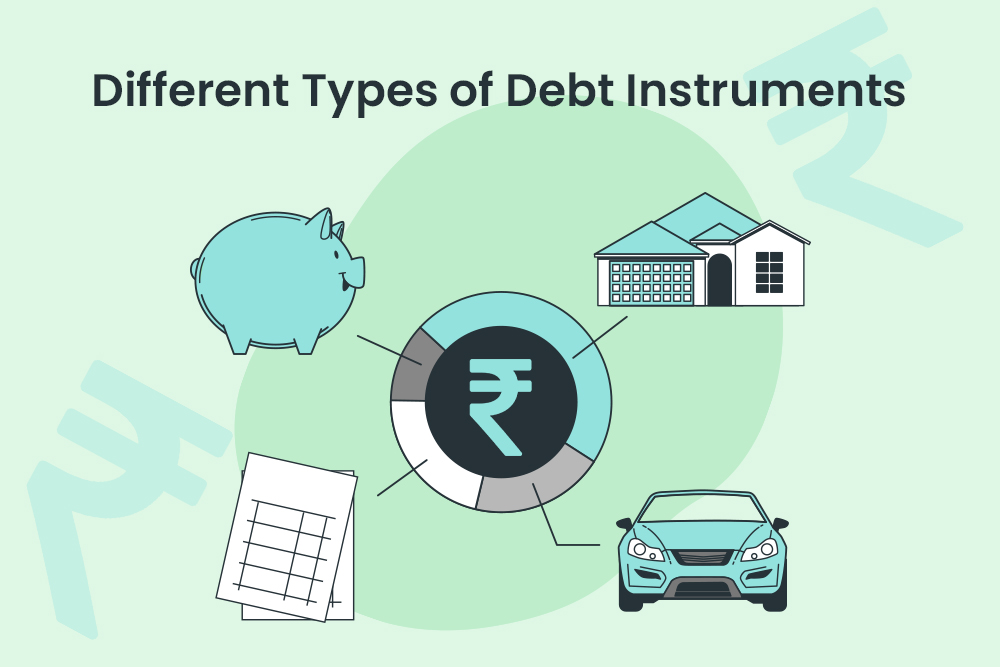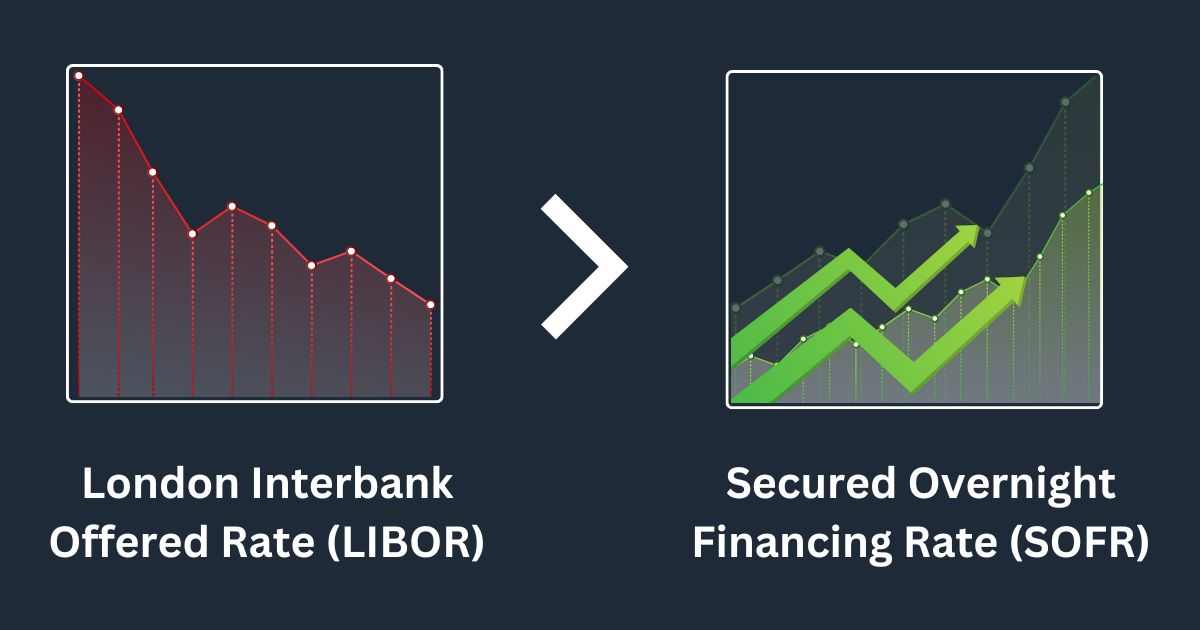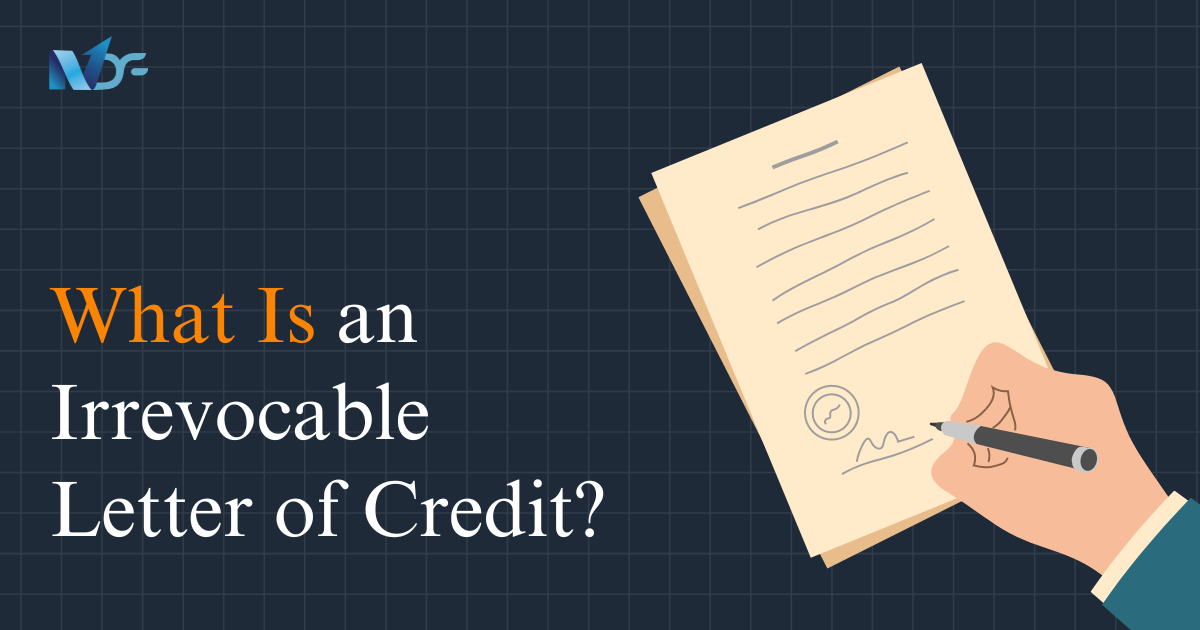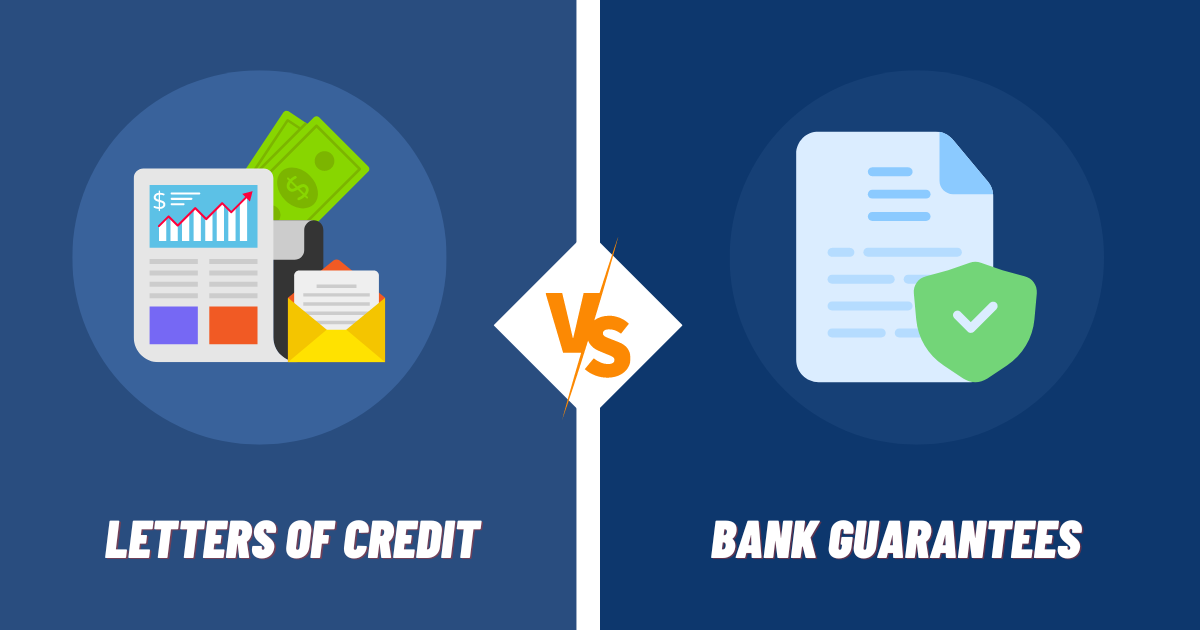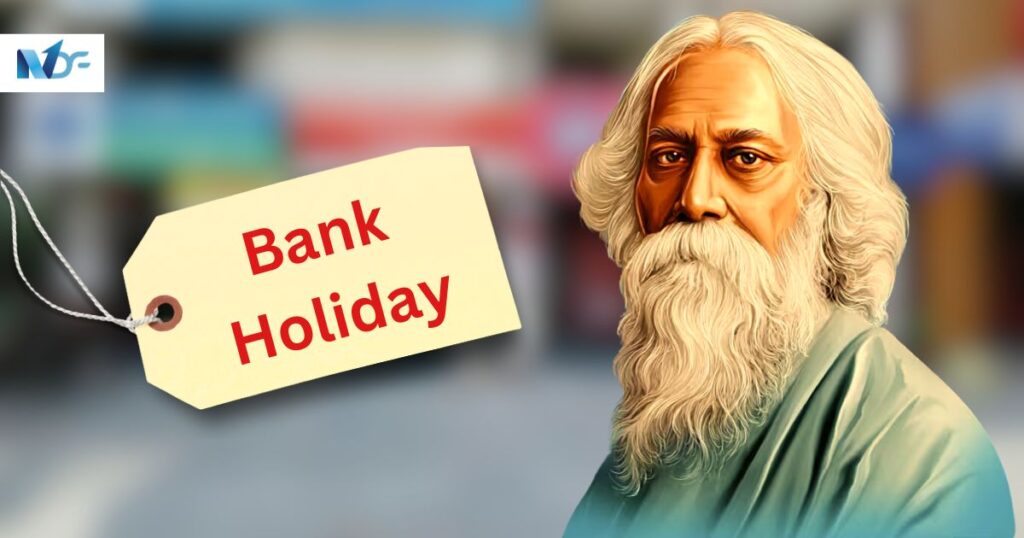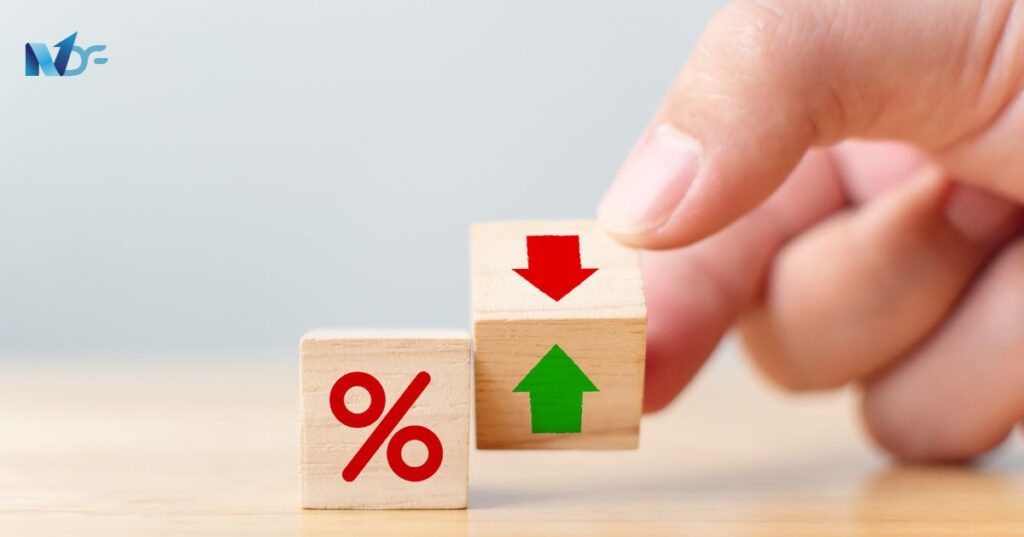Debt instruments may sound boring, but they’re actually pretty cool financial assets. From bonds to loans and promissory notes to certificates of deposit, there’s a variety of types to choose from. But beware, each comes with its own set of risks and rewards. So, if you want to be a savvy investor, it’s important to understand the ins and outs of different types of debt instruments.
What is a Debt instrument?
A debt (debt here denotes the money that is due or owed) instrument is the monetary tool primarily used to raise business capital that companies and entities generally prefer. This instrument is documented and has a legally binding commitment that ensures funds to the entity with the commitment to return the money to the lender or investor as per the terms and conditions decided in the contract.
The pre-defined contractual terms include interest payment, mortgaging of collateral, maturity date, and whether the debt instrument is convertible.
Debt instrument comes in digital and paper form and can be secured or unsecured. The asset or non-moveable property becomes the collateral in secured debts as an assurance for recovery in case of a payment default.
Different types of debt instruments available India

1. Debenture
A debenture is a kind of debt instrument that comes under the category of unsecured credit by collateral. Debentures are long-term capital borrowing that is ensured based on the creditworthiness and goodwill of the issuer. Every public and private enterprise issue this debt to raise capital and business funds in India.
- Debentures are sufficed for over ten years and are not backed by collateral.
- Some debentures can be transformed into equity shares, while some cannot.
- They carry a lower rate of interest and longer repayment time.
- Investors attract towards convertible debentures if there is any instinct that the company’s share price will increase. Still, convertible debentures pay a lower interest rate than fixed-rate investments.
2. Bond
A bond instrument represents a loan made by an investor to the borrower. Bonds are generally used by companies, municipal departments, and state governments; it includes details of loan repayment and interest along with the maturity date. Creditors and debt holders are generally the owners of bonds.
- Bonds are components of debt issued generally by corporate companies and considered tradeable assets.
- Fluctuating and unsettled interest rates are common.
- Bond prices are oppositely proportionate to interest rates; when rates increase, bond price falls contrarily.
- The Bond price is set at face value to suppose INR 1,000, which may fluctuate depending upon factors like credit quality, length and time duration, and coupon rate.
Suggested Read: RBI Bonds for Senior Citizens 2023 | Best Investment Option for Senior Citizens
3. Mortgage
The mortgage is one of the long-term debt capital instruments in India. In straightforward terms, this loan process deals with two parties one is the borrower, and the other is the lender. The mortgage loan is helpful in financing and acquisition of real estate property, whereby the lender agrees to the monthly and easy repayment in the form of instalments that includes the principal amount and interest rate.
- The mortgaged property itself serve as the collateral.
- This debt instrument is generally used to purchase homes and real estate.
- The mortgage rate generally depends on the kind of product, qualifications and needs of the applicant.
- Fixed and adjustable rates are possible in mortgages.
- Mortgage duration generally lasts for 15-30 years.
Popular available mortgages to individuals are
- Simple Mortgage
- Usufructuary mortgage
- English mortgage
- Mortgage by conditional sale
- Mortgage by title deed deposit
- Anomalous mortgage
4. Fixed deposits
Fixed deposit is a most-discussed when one researches about different types of debt instruments. It is offered by Banks and NBFCs and pays a higher rate of interest to customers/investors if compared with savings accounts. The fixed deposit facility is availed for a minimum 1 week to 10 years and is not availed before the maturity date of FD and institutions may charge on early withdrawal with a penalty fee.
5. Certificate of deposit
It is a limited or specified time period deposit. It is nearly identical to a traditional bank savings account. Generally, they are risk-free and insurance-backed. Certificate of deposits are issued for a minimum of 1 year to a maximum of 3 years
Suggested Read: Smart Ways to Increase CIBIL Score from 600 to 750
6. Long-term loan
A form of debt generally repaid over an extended time period of more than three years. Payment tenure can vary anywhere between 3-30 years. Some general examples of long-term loans are car, home, and other personal loans.
7. Short-term loan
This loan is generally obtained to enhance temporary, personal and business capital needs. It involves repayment of the principal amount and the interest rate on any given due date. The duration generally ranges from 1-2 years. It is an extended credit facility used to finance entities in shortage of cash examples include credit cards, bank overdrafts and trade credit.
8. National savings certificate
A national savings certificate is a long term type of debt instrument backed by the government of India and considered risk-free. NSCs have a maturity period of 6 years with an 8% annual return. As per section 80c of the Income tax act NSC qualifies as an investment with no tax deducted at source.
9. Treasury bills
Treasury bills are the money market instrument issued by the Reserve Bank of India, Government of India. This acts as a liability to the Indian government and is repaid within the stipulated period of time. It is risk-free, with the highest maturity period of 364 days and can be easily converted into cash during emergencies. Treasury bills are auctioned weekly through non -competitive bidding, creating higher cash flows to the capital market.
Treasury bills are built on a tenure basis, while discount rates and face values change depending upon certain factors like funding requirements, the policy of the reserve bank and total bids appeared.
10. Commercial paper
Commercial paper is one of the types of debt instruments which is short-term and is used by corporate entities to raise capital over the year. It is considered an unprotective instrument used as a promissory note. It comes with minimum 7 days maturity period and a maximum of one year. Commercial papers are available in amounts of INR 5 lakhs or multiples of the same value.
Benefits associated with Debt Instruments:

1. Less Tariff in Interest
Those companies with debt finance get the aid of interest deduction from the interest before calculating the total tax paid.
2. No loss in the ownership of the company –
One of the most important reasons why entrepreneurs prefer debt financing over equity is that the debt-acquiring company doesn’t lose the hardly-built company to the new shareholders.
3. Funds can be easily raised.
If compared with equity, raising debt funds is comparatively very easy as you see various lenders, banks, and financial institutions are there for debt funding. A fixed principal amount and an interest rate are paid on a stipulated time.
4. A safer option to invest
Some known debt instruments like debentures. Corporate bonds and commercial papers are safe and secure investment options. The cost of investment is comparatively low and not get affected by market risk.
5. Easy access to money
Fixed-income securities have high liquidity; the amount can be withdrawn anytime and gets the amount in less than 24 hours. They are required much at the time of financial urgency.
Conclusion
Money makes the world go round, and the human race is no exception. From the smallest of necessities to the biggest of dreams, financial resources are essential for our survival, growth, and progress. Luckily, there is a powerful tool available to meet these needs: debt financing through debt instruments. By taking on credit, we can access the funds necessary to achieve our monetary goals and secure a brighter financial future. It’s a strategic approach to navigating the ups and downs of the financial landscape and making our aspirations a reality.
We hope you liked the article and if your business needs any kind of financing, you can count on us. We will help your business to realize its full potential. Give us a call at +91-7810844844
Suggested Read:
- What is SSI? Small-Scale Industries Explained
- What is Loan Resource App: Benefits, Comparison & How to Apply
- Best 10 Instant Personal Loan Apps in India
- 70+ Best RBI Approved Loan Apps In India [2023]
- Fake loan app list: 500+ apps you should avoid at any cost
- MSME Advantages and Disadvantages: Unlocking the potential of MSMEs in India
FAQs
Which card is the debt instrument?
Credit card bills, Bonds and treasury notes are short-term debts, whereas mortgages and long-term loans are long-term instruments.
What are the two instruments of the debt market?
A debt instrument is divided into long-term instruments, which comprise debentures, bonds, long-term loans for financial institutions and short-term instruments.
Why invest in debt instruments?
- Low-cost structure
- High liquidity
- Stable returns
- Safety
What are the four basic categories of debt instruments?
Four basic debt instruments include
- Coupon bonds
- Simple loans
- Fixed payment loan
- Discount bonds
What are the two types of debt finance?
Two types of debt involved are
- Instalment debt
- Revolving debt
What is debt security?
A debt security is a severe form of a debt instrument with a complex structure. Money from multiple lenders has been raised and repaid them accordingly.
Is IPO a debt instrument?
IPO stands for (Initial public offering), which is the first stock sale by a company to the public. The company raises money through debt (bonds & debentures) and equity (shares, trusts, funds, units).

